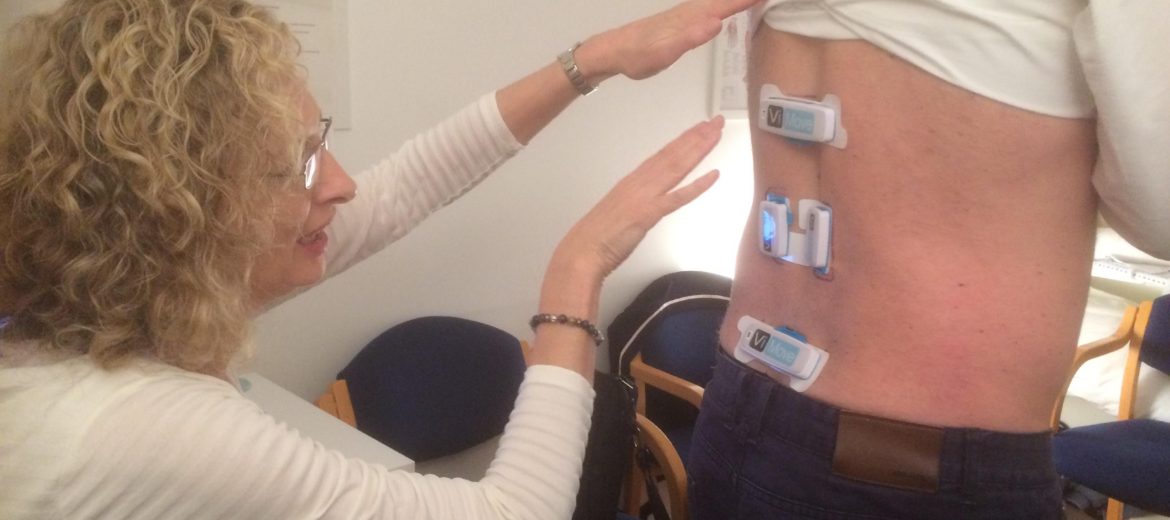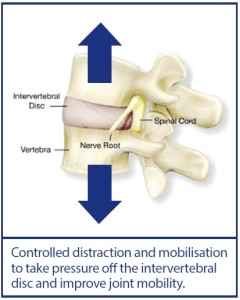In this video, Stephen Small (IDD Therapy Disc Clinics), Sally Lansdale (Spinex Disc Clinic) and Andy Curtis (ViMove) conduct an impromptu experiment using ViMove gyroscopic movement sensors DURING an IDD Therapy treatment.
This is the first time such an experiment has been conducted. The intent was to look at muscle activity, however, what came out revealed something we hadn’t set out to show!
ViMove includes gyroscopic movement sensors as well as EMG muscle testing. During a ViMove training at Spinex Disc Clinic, we were working on how best to incorporate the functional movement measurement of ViMove within the IDD Therapy Disc Programme. (Note ViMove is benchmarked against the Vicon movement measurement system.)
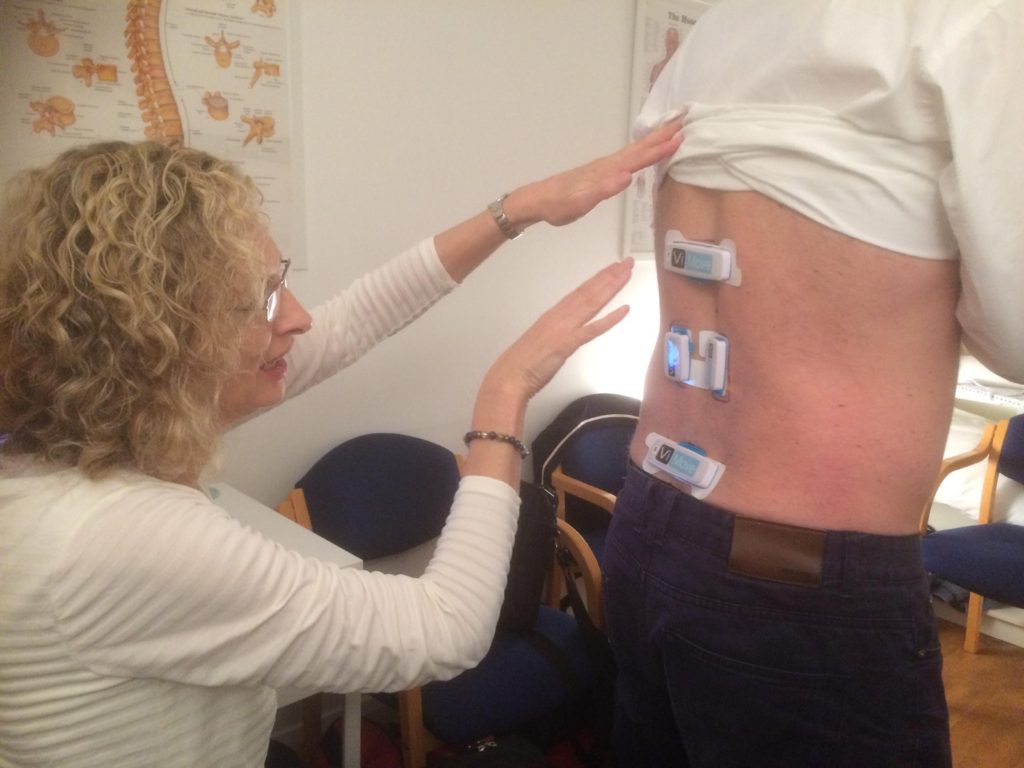
Part of the training looked at understanding muscle activity in back pain sufferers. Establishing normal muscle firing patterns is a key part of treating certain back pain conditions. In a light bulb moment, we wondered what would happen to muscles whilst a patient underwent IDD Therapy.
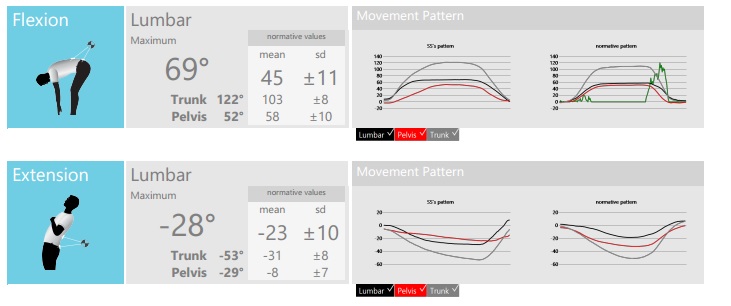
IDD Therapy incorporates cyclic distraction of targeted spinal segments and longitudinal joint mobilisation. There is a profound stretch on soft tissues which is part of the therapy to improve spinal mobility.

However, in the experiment during IDD Therapy we observed that muscle activity is minimal. This in fact is not surprising because a patient lies relaxed on the IDD Therapy treatment table. Muscles are relaxed, of course!
Andy Curtis who looks after the clinical development of ViMove was monitoring the ViMove sensor readings in line with the oscillation of the IDD Therapy and noticed that ViMove was picking up changes in flexion and extension of the lumbar spine during IDD Therapy.
With IDD Therapy the targeted spinal segment is distracted (comfortably) using tensions built up to and over half a patient’s body weight. At the point when the joint is distracted (opened), the distraction force oscillates longitudinally, on average around 10lbs (4.5kgs).
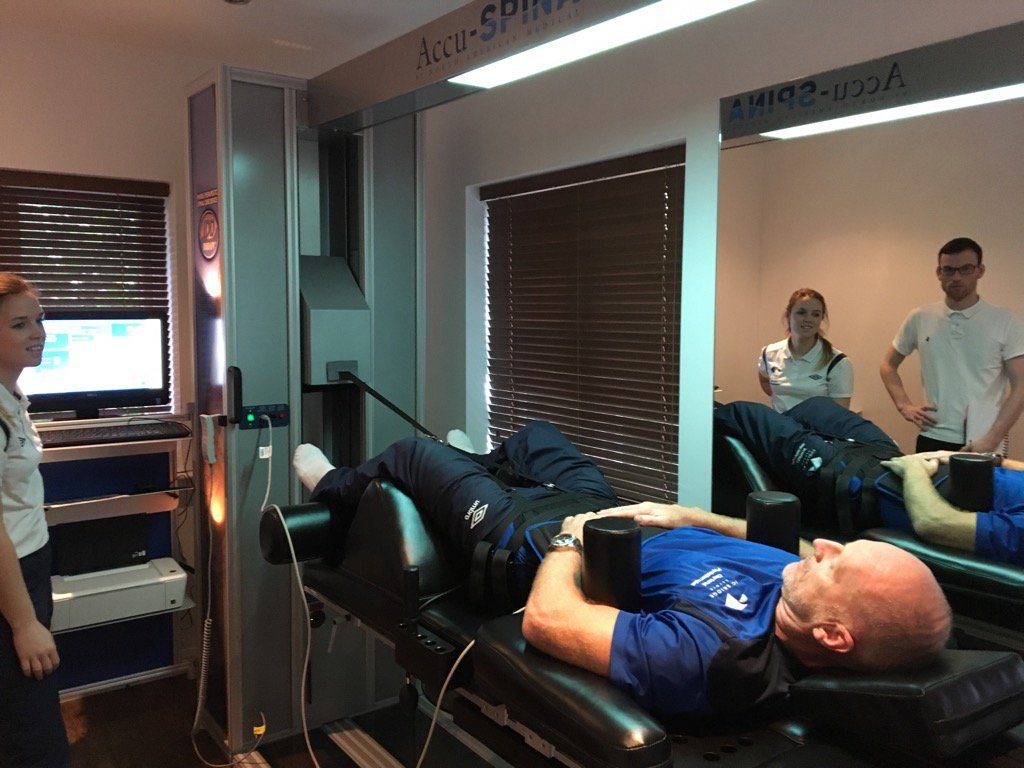
The ViMove sensors effectively show us that during the oscillation in IDD Therapy, at the point when the joint is distracted, the spine moves between flexion and extension by several degrees.
This opens up many considerations.
We know the benefits of the IDD Therapy Disc Programme. As we delve deeper into the components of treatment, we can get insights which may help develop new understandings of when and how treatment parameters may be altered.
As an example, I have conducted a Guinea Pig experiment on myself using a higher oscillation, namely 20lbs (see article). With the results of ViMove observations, we might reasonably infer that the range of flexion and extension will be increased, the higher the oscillatory force. There will be instances where this is therapeutically desirable, particularly when there is significant stiffness in the lumbar spine.
The mobilisation when the joint is distracted works soft tissues and causes small pressure differentials. From the ViMove observation, we can infer that the facet joints are being mobilised (longitudinally rather than anterior-posterior) and this may have an effect on synovial fluid exchange (synovial pump action). This in turn is desirable when considering how to improve joint mobility.
FACET INJECTIONS!
My thoughts turn to facet injections. Facet injections are given to reduce inflammation but they do nothing per se to re-distribute load bearing on the facet joint itself. We know that IDD Therapy can provide a programme of rehabilitation post-injection and this experiment further supports the argument since IDD Therapy is mobilising the very structure the injection is intended to relieve.
A growing number of IDD Therapy providers incorporate advanced movement analysis as part of their Disc Programmes. ViMove gyroscopic movement sensors give arguably the most accurate measure of spinal range of motion of any system available on the market.
As well as measuring range of motion (e.g flexion, extension, side bending) the system also measures functional movement imbalances and muscle activity. Improving functional movement is a key goal of the IDD Therapy Disc Programme.
ViMove enables IDD Therapy practitioners to measure the response to treatment through accurate measurement of change. But it also demonstrates imbalances in function which can help practitioners tailor some of their manual therapy and exercises to specific areas of weakness and imbalances.
In an RCT, The effect of changing movement and posture using motion-sensor biofeedback, versus guidelines-based care, on the clinical outcomes of people with sub-acute or chronic low back pain showed that ViMove patients were 2.5x more likely to have clinically important improvements vs standard care at 12 months (see RCT – ViMove RCT )
Thus ViMove can help practitioners fine tune the IDD Therapy Disc programme as part of a programme for lasting recovery.
Stephen Small is Director of Steadfast Clinics and IDD Therapy Disc Clinics, the largest network of spinal disc treatment providers. e: stephen.small@steadfastclinics.co.uk
To find an IDD Therapy Disc Clinic near you, use the CLINIC FINDER
PRACTITIONERS: To become an IDD Therapy provider or to receive an information pack, complete the form below.

